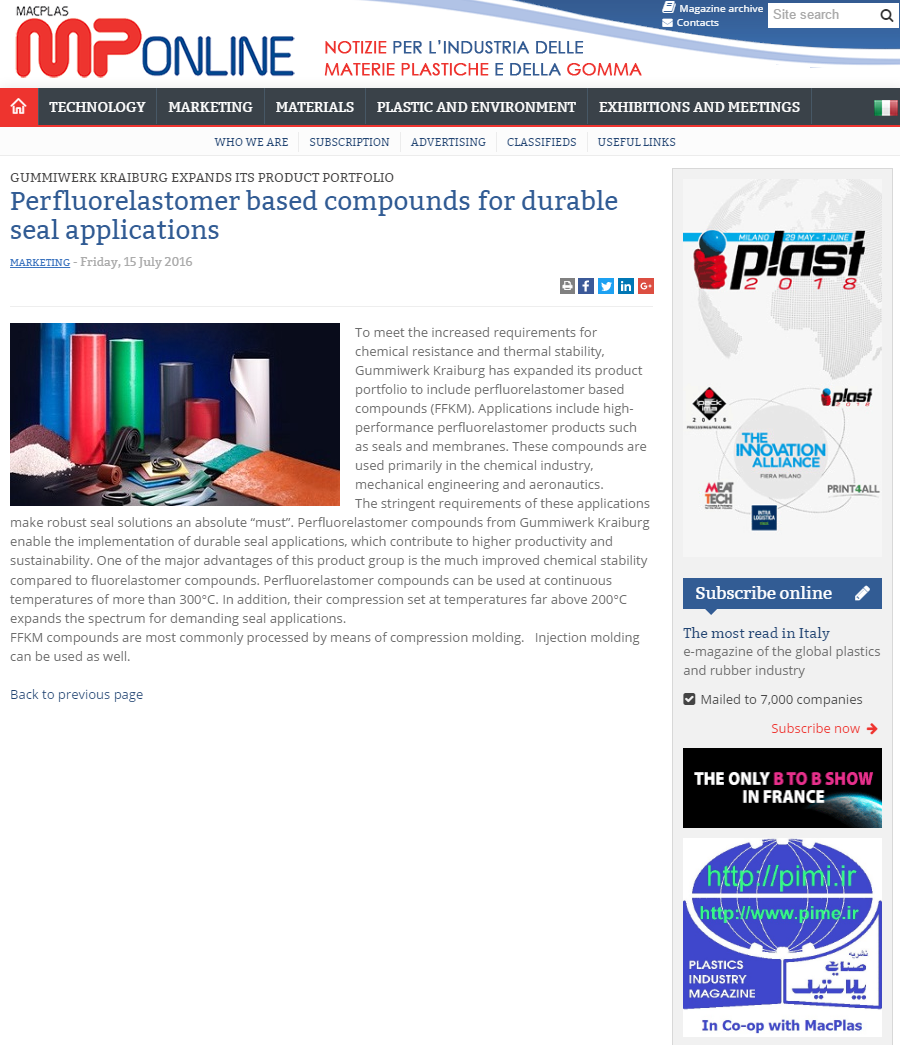
To meet the increased requirements for chemical resistance and thermal stability, Gummiwerk Kraiburg has expanded its product portfolio to include perfluorelastomer based compounds (FFKM). Applications include high-performance perfluorelastomer products such as seals and membranes. These compounds are used primarily in the chemical industry, mechanical engineering and…
Read More From The Source
Visit Kraiburg
About PERFLUOROELASTOMER (FFKM):
ASTM D 1418 DESIGNATION: FFKM
ASTM D 2000, SAE J200 TYPE / CLASS: JK, HK
STANDARD COLOR: Black
TRADE NAMES: Kalrez® (DuPont), Chemraz® (Greene, Tweed)
RELATIVE COST: Very High
TEMPERATURE RANGE: -25° to +575°F
OVERVIEW
Most commercial perfluoroelastomers are terpolymers of tetrafluoroethylene (TFE), perfluoromethylvinyl ether (PMVE), and a cure site monomer (CSM). The fully-fluorinated monomers contained in perfluoroelastomers are the reason they exhibit superior chemical resistance. As with fluorocarbon elastomers, the bonds between carbon and fluorine atoms are extremely strong, making the chemical structure virtually unbreakable. Also, polymers with high levels of fluorine (as opposed to hydrogen) have proven to be more stable and less chemically reactive. Perfluoroelastomers also enjoy immunity from chemical attack due to saturation along the polymer’s backbone. There are no double bonds to be attacked by degradants such as oxygen, ozone, UV light, or harsh chemicals.
Perfluoroelastomers can trace their lineage back to the late 1960s, when chemists at DuPont pioneered what came to be known as Kalrez®. In so doing, they combined the chemical resistance of polytetrafluoroethylene (Teflon®) and the elasticity of flouroelastomer (Viton®) into a fully-fluorinated polymer that could be cross-linked. Differences in perfluoroelastomer performance are often due to the manner in which the material is cross-linked.
Perfluoroelastomer Performs Well In:
• Most chemical & petrochemical situations
Perfluoroelastomer Performs Poorly In:
• Uranium hexafluoride
• Some fluorinated solvents













